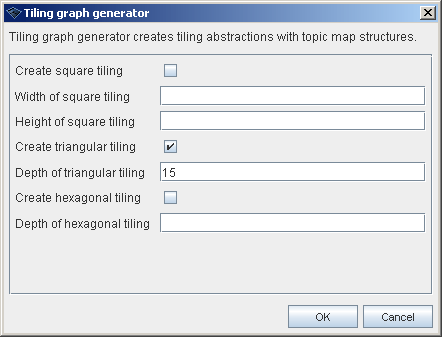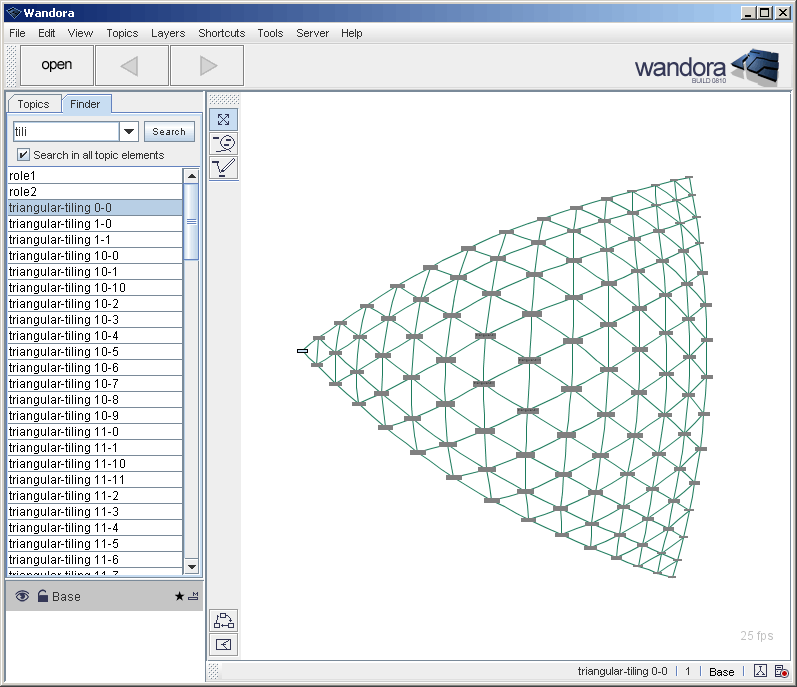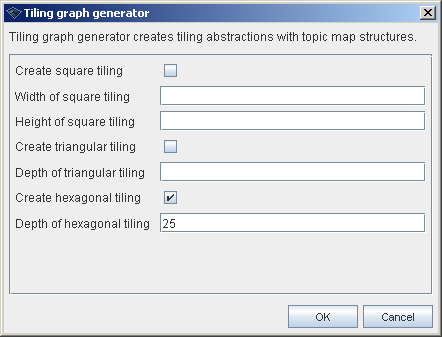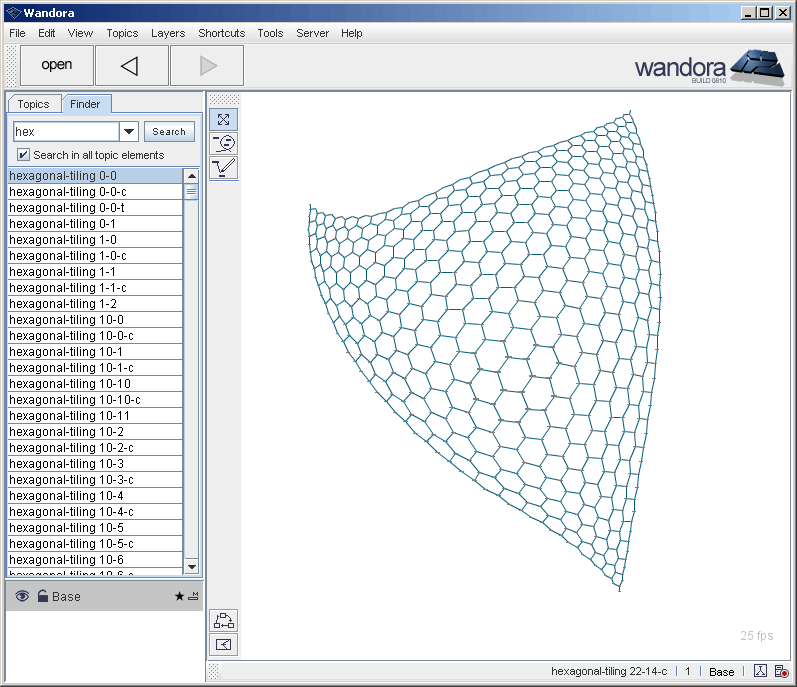Tiling graph generator
(→Square tiling) |
|||
| Line 7: | Line 7: | ||
Tiling generator starts with option '''File > Generators > Tiling graph generator...'''. | Tiling generator starts with option '''File > Generators > Tiling graph generator...'''. | ||
Tiling graphs can be used to model chemical structures such as [http://en.wikipedia.org/wiki/Graphite graphite] and [http://en.wikipedia.org/wiki/Carbon_nanotube carbon nanotubes] for example. | Tiling graphs can be used to model chemical structures such as [http://en.wikipedia.org/wiki/Graphite graphite] and [http://en.wikipedia.org/wiki/Carbon_nanotube carbon nanotubes] for example. | ||
| + | |||
| + | Each generator creates a graph form | ||
| + | To create other graph forms , create first large rectangular graph, select nodes in Wandora's graph view and remove selected topics. The idea is to cut away useless topics. | ||
== Square tiling == | == Square tiling == | ||
| − | Square tiling is a graph where each vertex is connected to | + | Square tiling generator creates a rectangle tiling of given width and height. Square tiling is a graph where each vertex is connected to |
* four other vertices if vertex is inside the graph. | * four other vertices if vertex is inside the graph. | ||
* three other vertices if vertex is on the edge of the graph. | * three other vertices if vertex is on the edge of the graph. | ||
| Line 25: | Line 28: | ||
== Triangular tiling == | == Triangular tiling == | ||
| − | Triangular tiling is a graph where each vertex is connected to | + | Triangular tiling generator creates a triangular graph form of given height. Triangular tiling is a graph where each vertex is connected to |
* six other nodes if vertex is inside the graph. | * six other nodes if vertex is inside the graph. | ||
* four other nodes if vertex is on the edge of the graph. | * four other nodes if vertex is on the edge of the graph. | ||
| Line 40: | Line 43: | ||
== Hexagonal tiling == | == Hexagonal tiling == | ||
| − | Hexagonal tiling is a graph where each node is connected to | + | Hexagonal tiling generator creates a triangular graph form of given height. Hexagonal tiling is a graph where each node is connected to |
* three other nodes if the node is inside of the graph. | * three other nodes if the node is inside of the graph. | ||
* two other nodes if the node is on the edge. | * two other nodes if the node is on the edge. | ||
Revision as of 17:37, 26 October 2008
Wandora's tiling graph generator creates simple graphs that resemble regular polygon tilings. Available graph tilings are:
- Square tiling
- Triangular tiling
- Hexagonal tiling
Tiling generator starts with option File > Generators > Tiling graph generator.... Tiling graphs can be used to model chemical structures such as graphite and carbon nanotubes for example.
Each generator creates a graph form To create other graph forms , create first large rectangular graph, select nodes in Wandora's graph view and remove selected topics. The idea is to cut away useless topics.
Square tiling
Square tiling generator creates a rectangle tiling of given width and height. Square tiling is a graph where each vertex is connected to
- four other vertices if vertex is inside the graph.
- three other vertices if vertex is on the edge of the graph.
- two other vertices if vertex is one of the four corners of the graph.
Gives a graph topic map
Triangular tiling
Triangular tiling generator creates a triangular graph form of given height. Triangular tiling is a graph where each vertex is connected to
- six other nodes if vertex is inside the graph.
- four other nodes if vertex is on the edge of the graph.
- two other nodes if the vertex is one of the three corners of the graph.
gives you a graph
Hexagonal tiling
Hexagonal tiling generator creates a triangular graph form of given height. Hexagonal tiling is a graph where each node is connected to
- three other nodes if the node is inside of the graph.
- two other nodes if the node is on the edge.
- one other node if the node is one of the three corners of the graph.
gives you a graph





